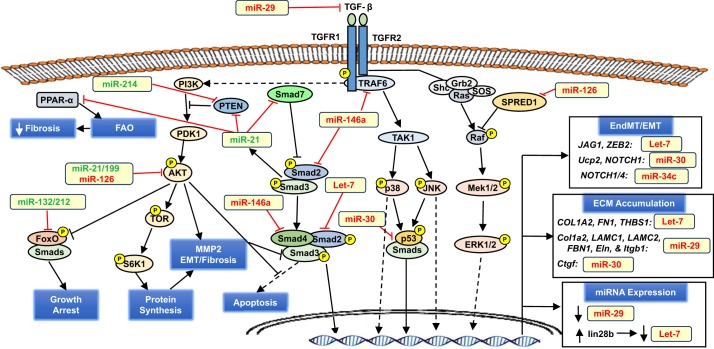Fig. 2.
Key pro- and antifibrotic miRNAs implicated in transforming growth factor (TGF)-β signaling in the kidney. TGF-β is the central player in the initiation and progression of renal fibrosis by driving endothelial-to-mesangial transition (EndMT) and epithelial-to-mesenchymal transition (EMT), as well as extracellular matrix (ECM) remodeling and protein accumulation. Both canonical (Smad-dependent) and noncanonical (MAPKs and AKT) signaling pathways are involved and targeted by various miRNAs (boldface) that broadly favor or oppose fibrosis; however, given their broad range of gene targets, it is unlikely that a particular miRNA is strictly anti- or profibrotic. Plus, the same gene target may have conflicting actions. Although Zeb is implicated in the EMT program via in part the repression of E-cadherin, Zeb is also involved in repressing TGF-β expression. Conflicting actions are also reported for the ERK signaling cascade, which is involved in EndMT/EMT but also inhibits receptor Smads. In the text box, the human gene is shown where validated in human or in both human and rodent. Antifibrotic miRNAs are colored red; profibrotic miRNAs are colored green. See the text for additional details.

